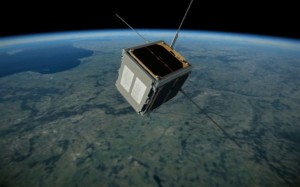
 On July 13, the European Space Agency (ESA) Council approved the accession of Poland to the ESA Convention. The move was a major step forward for Poland, which had been briefly held back by limited internal resistance to the accession.
On July 13, the European Space Agency (ESA) Council approved the accession of Poland to the ESA Convention. The move was a major step forward for Poland, which had been briefly held back by limited internal resistance to the accession.
Poland has been a European Cooperating State in 2007 and is currently in 42 projects under the Cooperating States charter, totalling €11 million. The move to full member state will give Poland a greater say in decision making as well as allow the state to participate in ESA’s geographic return policy. Without the geographic return, Poland would see no more than 5% of the €500 million is has already invested in European space projects returned to its citizens.
The journey to accession has not been without drama. In the first half of 2012, Poland’s Finance Ministry determined to block Poland’s entry into ESA. The ministry stated that membership in ESA would be too costly at a time of financial straits and would not provide a sufficient return on investment. However, the ministry was alone in this opinion. “The main benefit of joining the ESA will be access of Polish companies to technology projects and aerospace market worth about PLN one billion. Polish science will also benefit through access to scientific instruments operating in space” – explained Mateusz Wolski of the Industrial Research Institute for Automation and Measurements. After a widespread lobbying effort, the Finiance Ministry backed down. On June 12, the Polish government accepted the result of earlier negotiations with ESA and agreed to move forward with accession.
Following ESA Council approval, Poland must now internally ratify the Accession Agreement. This time, no holdups are anticipated. In the meantime, Poland will have observer status on the ESA Council. If Poland is able to ratify the treaty quickly, they will be able to be part of critical strategy decisions that will affect Europe for the next decade. Decisions are expected on numerous important projects, regarding the International Space Station, the successor to the Ariane 5 rocket, the ATV program, and others.


















































































































![A trajectory analysis that used a computational fluid dynamics approach to determine the likely position and velocity histories of the foam (Credits: NASA Ref [1] p61).](http://www.spacesafetymagazine.com/wp-content/uploads/2014/05/fluid-dynamics-trajectory-analysis-50x50.jpg)



Leave a Reply